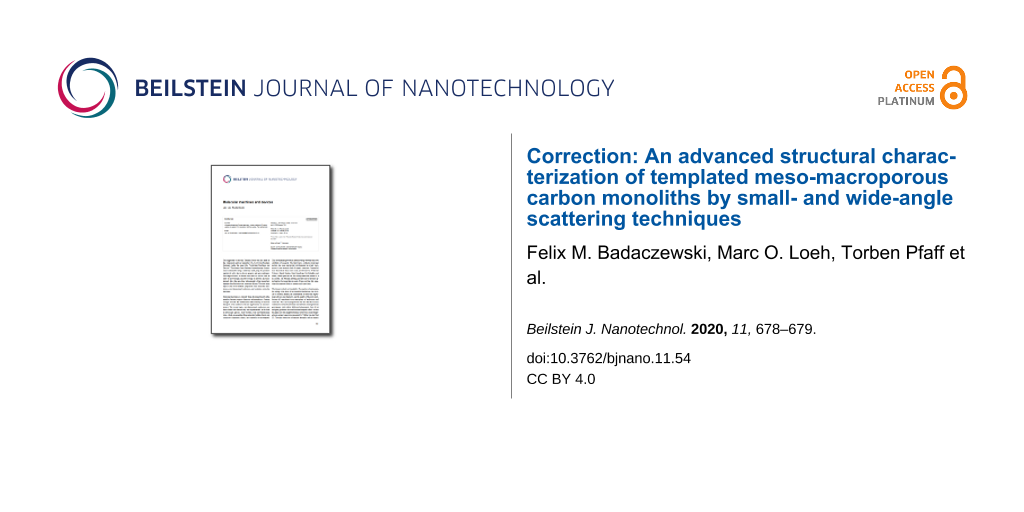The following graph (A) should be implemented in Figure 4 of the original article, since it was part of the manuscript and was accidently removed during the revision process. No other change in the corresponding text and caption of Figure 4 is necessary.
![[2190-4286-11-54-1]](/bjnano/content/figures/2190-4286-11-54-1.png?scale=2.0&max-width=1024&background=FFFFFF)
Figure 1: Figure 4 in the original article: SANS raw data (A) and CLD analysis (B) for the four resin- and pitch-based carbon materials, treated at 800 °C and 3000 °C. For all samples, SANS analysis was performed on evacuated samples (hollow symbols), as well as under a maximum load of deuterated p-xylene (filled symbols). All samples exhibit a Porod-asymptote (s−4) at large s (modulus of the scattering vector), proving an almost ideal two-phase system (pore–carbon) with sharp interfacial boundaries on the nanometer scale.
Figure 1: Figure 4 in the original article: SANS raw data (A) and CLD analysis (B) for the four resin- and pi...
© 2020 Badaczewski et al.; licensee Beilstein-Institut.
This is an Open Access article under the terms of the Creative Commons Attribution License (http://creativecommons.org/licenses/by/4.0). Please note that the reuse, redistribution and reproduction in particular requires that the authors and source are credited.
The license is subject to the Beilstein Journal of Nanotechnology terms and conditions: (https://www.beilstein-journals.org/bjnano)









